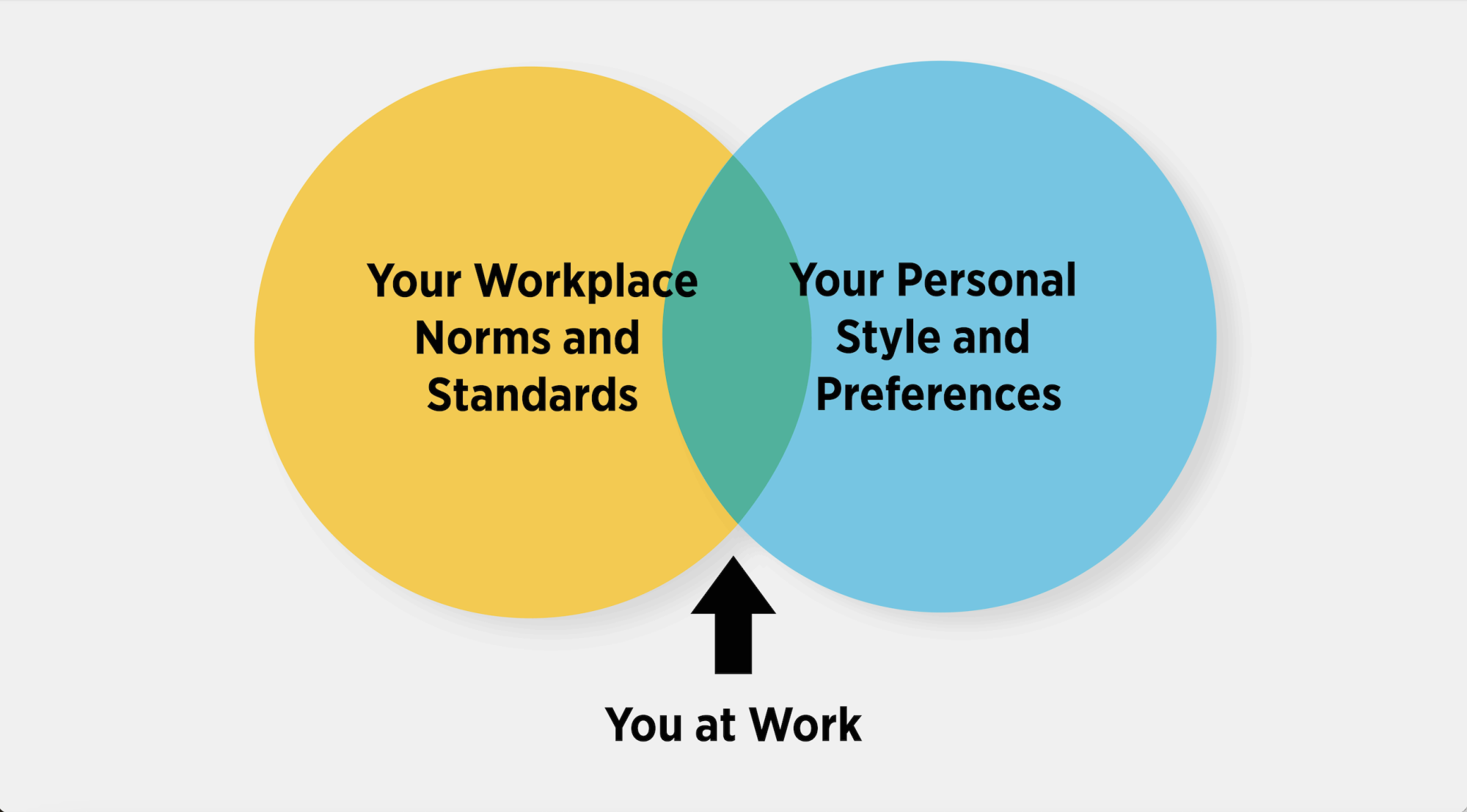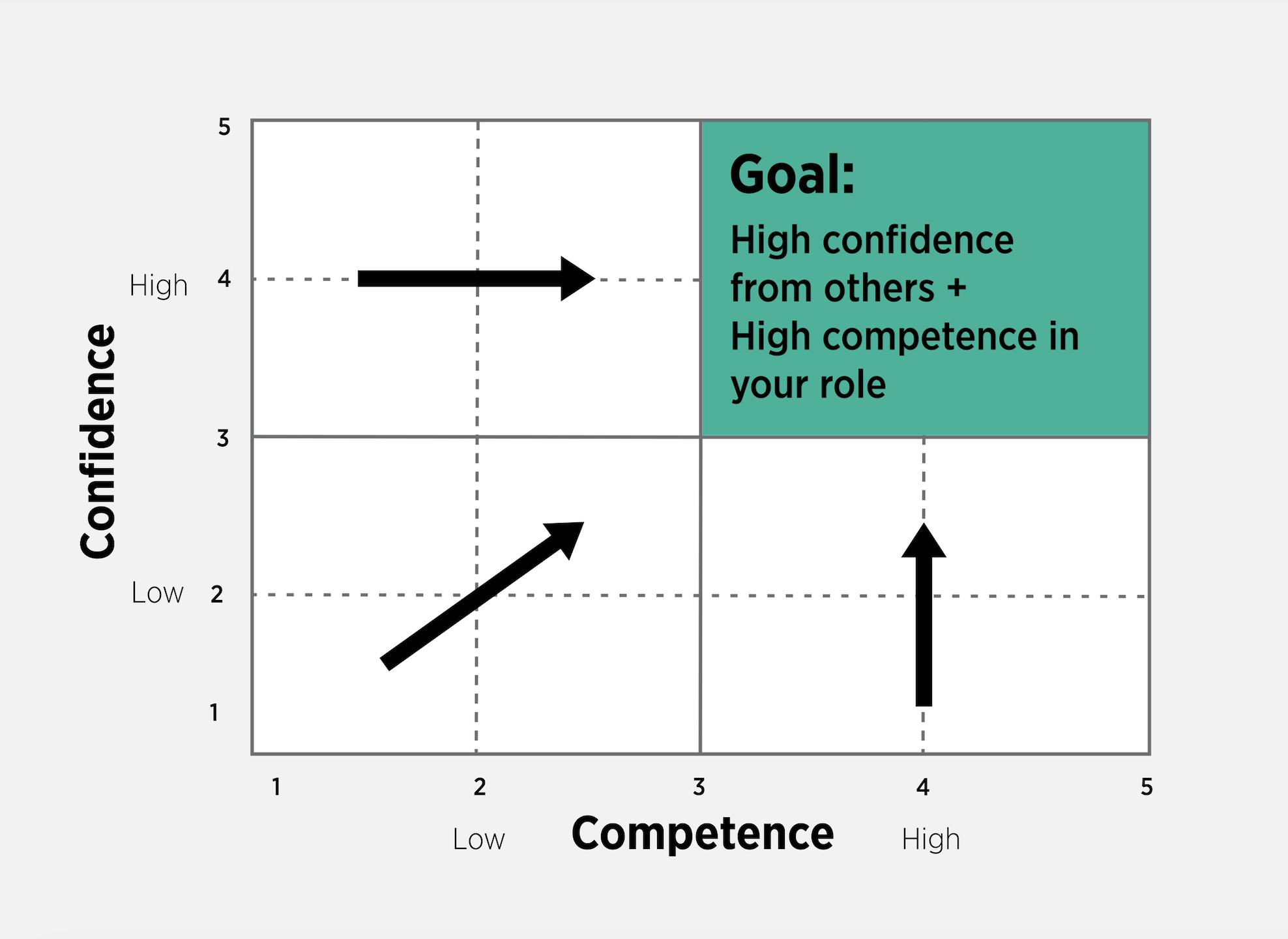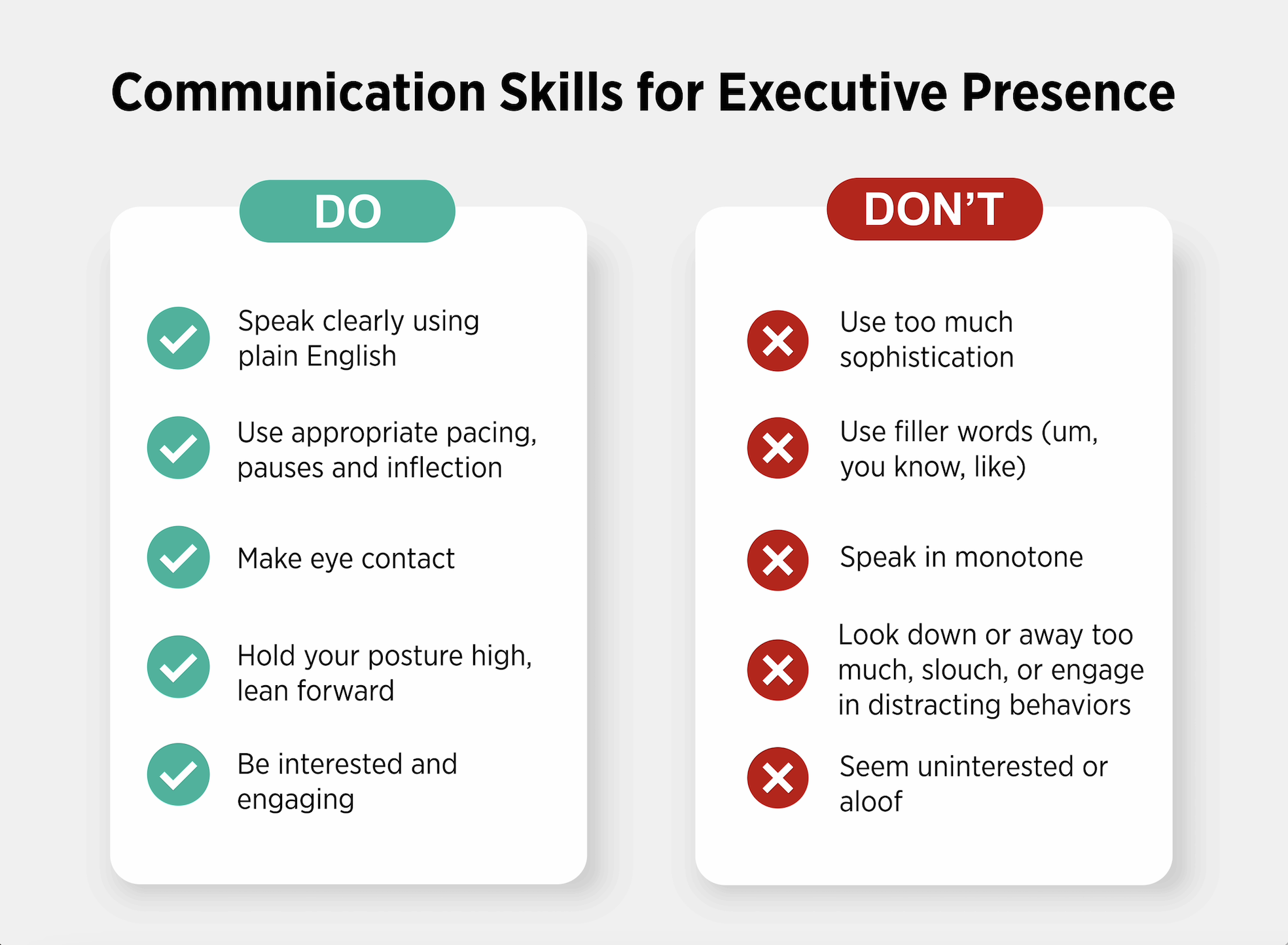
Have you ever wondered what makes a business executive look like, well, an executive?
If you’ve given it any thought, you’ve likely noticed a few things about top leaders that stand out.
First, they look the part, meaning, whatever environment they’re operating in — from the basement of a tech start-up to the C-suite in a FORTUNE 100 corporate office — they present a visual image that says, “I’m a leader here.” They also carry themselves with a certain air of confidence and swagger. People conclude they’re in charge because they act like they are. Lastly, they speak with authority, expressing a self-assured demeanor as they do.
If these three things resonate with you, you’ve picked up on the important cues senior managers often transmit.
We sum these characteristics up as executive presence: your ability to project mature self-confidence, a sense you can take control of difficult, unpredictable situations; make tough decisions in a timely way and hold your own with other talented and strong-willed members of the executive team.
Now let’s take a quick tour of the ABC’s of executive presence, exploring each one in turn.
Appearance
Appearance is how you present yourself in the workplace in terms of dress, grooming and body language.
It’s true standards of dress have changed over the past few years, thanks to the remote work revolution, but that doesn’t mean there isn’t a dress code where you work. Every place has them — formal or informal.
Regardless of your environment, it’s essential you take the time to understand how you’re showing up — your success depends on it.
If everyone in your athletic apparel company wears hooded sweatshirts, jeans and trendy sneakers in the office, showing up in a button down shirt and a blazer sends the unmistakable message that you don’t understand “how we do things around here.”
One of the significant challenges professionals face is identifying their unique personal preferences, style and brand. It is crucial to reflect on how these attributes align with the workplace environment. My sage advice is to gain a thorough understanding of your workplace’s norms and standards before attempting to distinguish yourself. And whether you’re trying to fit in or thoughtfully stand out, this knowledge ensures that your individuality complements rather than clashes with professional expectations when it comes to appearance at work.

Boldness
Boldness is the embodiment of calmness, courage and self-assurance, especially under pressure.
The foundation of boldness lies in two essential facets: competency in one’s field and the confidence in one’s capabilities. These are the twin pillars of what I term 'overall credibility.'
Credibility emerges from both one’s competence and the collective confidence others place in you. It authorizes one to act with boldness or courage. In leadership, confidence is paramount — it reassures others that the challenges we’re facing or opportunities we’re exploring will work out favorably — and should they not for some reason, we’ll still be okay.
As leadership author Peter Bregman points out in his Harvard Business Review of the same name, “Great leaders are confident, connected, committed and courageous.” All of these embody the boldness we want, even seek, in our leaders.

Communication
Communication relates to how we express our ideas when speaking or presenting.
As far as leadership effectiveness is concerned, communication is one of the most important skills to be developed. According to Brown University Distinguished Senior Lecturer, Barbara Tannenbaum, “Communication is the skill that makes good leaders great.”
But if you don’t find yourself a natural orator, rest assured, like any skill, all it takes is practice.
Seasoned executives radiate presence when they speak, projecting their voice clearly with words that are easy to understand. In terms of message delivery, professionals don’t use filler words like ‘um’ and ‘you know’. They’re also thoughtful regarding the pace and tone of their speech so they can reinforce important messages. Some of the best known politicians were former actors and their aplomb delivering messages became hallmarks of their time in office.
💡Tip: To enhance your communication skills, consider recording your presentation. This method can help you identify and reduce the use of unnecessary filler words, a lack of vocal variety and any counterproductive body language.

Action steps
- Assess your personal brand — ask someone who will be honest with you
- Plan one or two key changes
- Make the change and follow through!